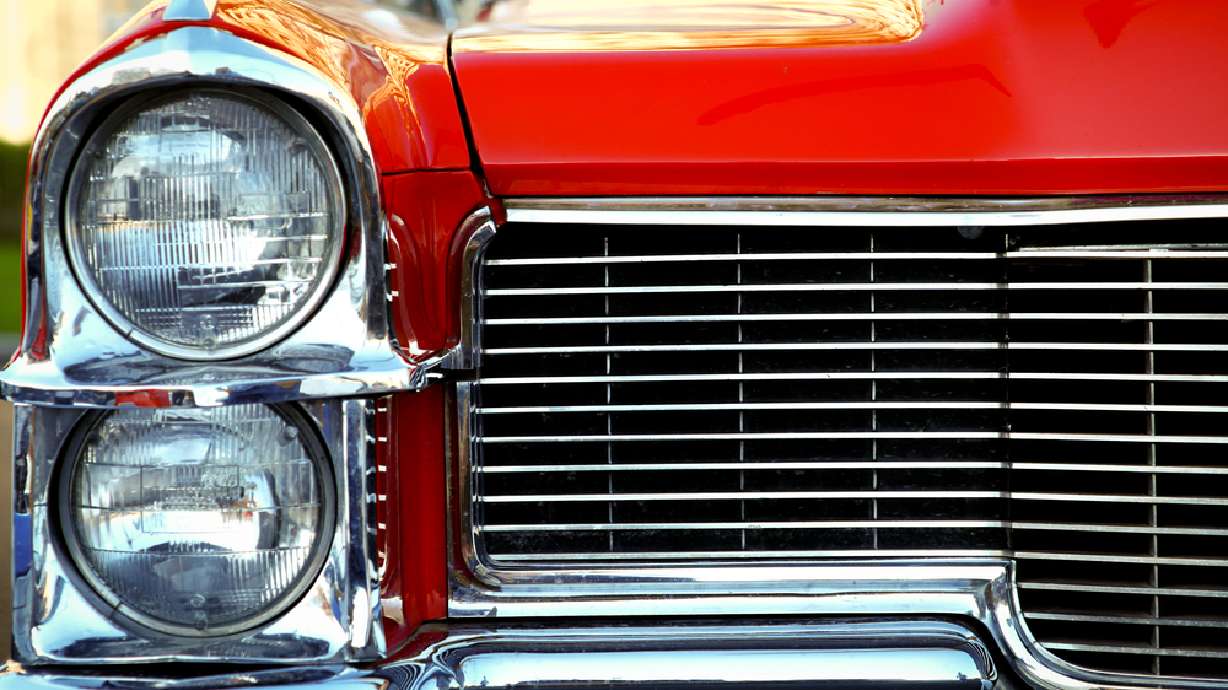Estimated read time: 4-5 minutes
This archived news story is available only for your personal, non-commercial use. Information in the story may be outdated or superseded by additional information. Reading or replaying the story in its archived form does not constitute a republication of the story.
Take a look at your parents' garage. What are they driving? A minivan? An SUV? It's probably an underwhelming sight. That's what time and children do to people: they're the catalyst that drives people to join the masses and buy newer models. Lost are the days of the coolest and most iconic vehicles to ever grace America's roads.
In honor of these lost cars, we look back at some of the coolest models of your parents', or perhaps, grandparents' era.
1986 Porsche 959
The Porsche has always been a cool car, and the 1986 Porsche 959 is no exception. Built for speed with its 959 twin turbocharged engine, it was considered the fastest street-legal car when it rolled off the assembly line, reaching a speed of 195 mph and jumping from 0 to 60 in 3.6 seconds.
One of the defining characteristics for all the Porsche coupes is the set of headlights resembling the eyes of a frog. It was also one of the first high-performing vehicles equipped with all-wheel drive. All in all, a pretty nice package.
1969 Ford Mustang Boss 429
It's no secret that the 1967 Mustang is a fan favorite. Back in the day, if you asked any guy what his dream car was, you would undoubtedly come across several who had the '67 Mustang at the top of his list. But true power and strength rolled off the assembly line just a few years later.
In 1969, we saw America flex its muscles in the sky and on the streets, rolling out the Boeing 747 and the infamous Mustang Boss 429, known as the "Boss 9" to enthusiasts. Originally built to be used for NASCAR, the 429 engine was bolted into a Mustang and sold to the public, according to this piece from CNN Money.
The muscle car's popularity hasn't yet subsided. It is still highly sought after with bids on eBay and Barrett-Jackson exceeding $375,000.

1978 Ford Bronco
The Ford Bronco is an American icon. It was made infamous by the O.J. Simpson highway chase. But beyond being known as the getaway vehicle of choice, it's a symbol of masculinity and power, and it's a crying shame that Ford discontinued the Bronco in 1996.

1946 Dodge Power Wagon
The Power Wagon looks as if it left the WWII battlefields of Europe and headed straight to the American highways. Actually, that's exactly what it was built for. According to Sweptline.com, a website dedicated to the history of the Power Wagon, it was built first to be used in the war and then were "slightly modified for civilian use."
These trucks were clearly built to last. The 2015 Ram 3500 weighs in at about 6,500 pounds, and the 1946 Power Wagon tipped the scales at 7,600 pounds; calling it a tank wouldn't be far from the truth.

1973 Chevrolet Corvette Stingray Coupe
The Stingray is still around in some form or another, but it's hard to forget the '73 model that was characterized by those unmistakable Corvette tail lights matched with a front end that was defined by its over-exaggerated front fenders.
This era was defined by muscle cars, and the Stingray was a worthy player in the field that included the Pontiac GTO, the Chevy Camaro ZL1 and the Dodge Charger R/T.

1972 Chevy C10
This truck was so cool, so American, that its recognition bypassed its various names and was known only as the Chevy pickup. Just like all GMC and Chevy trucks today, there is no obvious distinction between the two models' body styles besides the badge on the grille, but as said in the April 2006 issue of Auto Restorer magazine, "there was nothing like it on the road."
To add to the huge role that the body style had in defining the Chevy pickup, it was extremely loud, extremely heavy and it would guzzle gas to the tune of 8 mpg. By no means would that Chevy pickup be allowed on the production line today because of the Gas Guzzler Tax, but as one commenter from Cargurus.com said, "It's slow and old and loud and bad on gas, but that's what makes it cool!"
Agreed.

1964 Volkswagen Type 2
During the 1960s, hippies around the world banded together on a large-scale for three things: peace, love and the VW van. The Type 2 was built as a younger (yet larger) brother to the Volkswagen Type 1 or, as it is better known, the Bug. Type 2 was a symbol that defined the generation of those who made love and not war.
Its oversized VW hood ornament and Twinkie-shaped body, which could be identified from miles down the road, was not only welcomed by parents from all over, but a modern reproduction of this vehicle would also be met by some very happy hipsters.
Even though these cars probably won't be making a comeback anytime soon, there's a good chance that you'll be able to find the automobile icons on KSL Cars.









